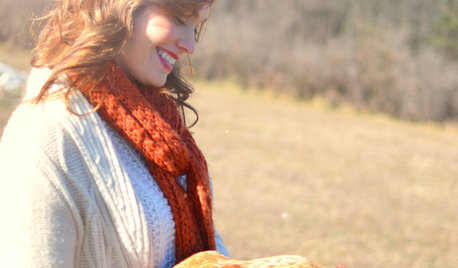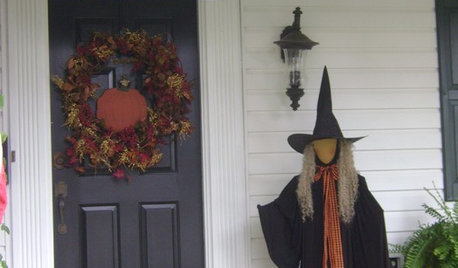We need some Monarch or Giant Swallowtail eggs/cats, anyone?
ksohio
11 years ago
Related Stories

FLOWERS AND PLANTSHelp Monarchs and Other Butterflies by Planting Common Milkweed
Summer-blooming Asclepias syriaca is an important larval host plant for the monarch butterfly and attracts a number of pollinating insects
Full Story
GARDENING FOR BUTTERFLIESBe a Butterfly Savior — Garden for the Monarchs
Keep hope, beauty and kindness alive in the landscape by providing a refuge for these threatened enchanters
Full Story
FALL GARDENINGWhat Monarch Butterflies Taught Me About Garden Design
Thinking like a butterfly leads to fresh perspectives in the garden and in life
Full Story
PETSHouzz Pets Survey: Who Rules the House — Dogs or Cats?
New data shows that pets make people happy, and pet owners love spending big to return the favor
Full Story
GARDENING FOR BUTTERFLIESGarden for Wildlife to Reap Rich Rewards
When you plant with animals and insects in mind, you make gardening easier, the planet healthier and yourself more present
Full Story
GARDENING GUIDES6 Plants That Beat Butterfly Bush for the Wildlife Draw
It's invasive, a nonnative and a poor insect magnet. Check out these better alternatives to butterfly bush in the garden
Full Story
GARDENING AND LANDSCAPINGRaise Backyard Chickens Without Ruffling Neighbors' Feathers
Before you build a coop in the backyard, follow these strategies to help keep your neighbors from squawking
Full Story
GARDENING GUIDESHow to Find the Right Native Plants for Your Yard
Find plant maps, sale sites and guides that make going native in the garden easier than ever
Full Story
Houzz Call: Show Us Your Halloween-Themed Entryway
Fright fest or full of friendly ghosts, your decorated entryway could be featured on the Houzz homepage
Full Story
GARDENING AND LANDSCAPINGHow to Make a Pond
You can make an outdoor fish paradise of your own, for less than you might think. But you'll need this expert design wisdom
Full Story






KC Clark - Zone 2012-6a OH
ksohioOriginal Author
Related Professionals
Bridgeview Landscape Contractors · Cambridge Landscape Contractors · Galt Landscape Contractors · Lantana Landscape Contractors · Pomona Landscape Contractors · The Woodlands Landscape Contractors · West Chicago Landscape Contractors · Golden Valley Landscape Contractors · Baltimore Fence Contractors · Brushy Creek Fence Contractors · Lake Jackson Fence Contractors · North Miami Beach Fence Contractors · Richmond West Fence Contractors · Winter Park Fence Contractors · Ruskin Window ContractorsKC Clark - Zone 2012-6a OH
ksohioOriginal Author
KC Clark - Zone 2012-6a OH
MissSherry
ksohioOriginal Author
terrene
bananasinohio
ksohioOriginal Author
bananasinohio
MarilynAnn
MarilynAnn
MissSherry
ksohioOriginal Author
bananasinohio
MarilynAnn
bananasinohio